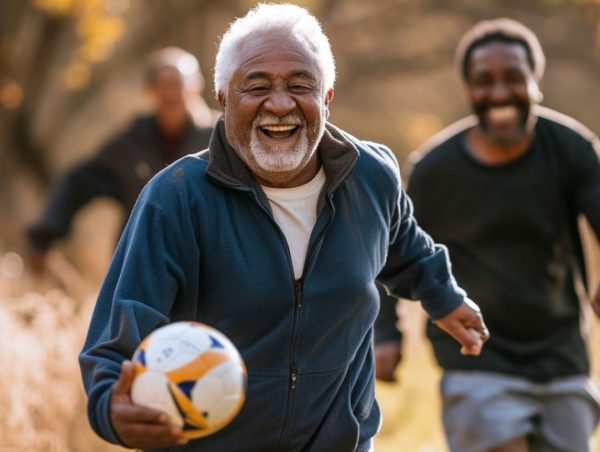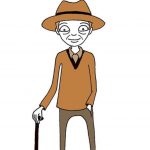In the August 19, 2024 issue of Advanced Natural Wellness, you learned some surprising facts about age-related muscle wasting, or sarcopenia.
You don’t have to be old to start experience symptoms; and you might not even look like you are losing strength and muscle mass.
To top it off, we’ve been raised with the idea that, once we reach a certain age, we should retire. Just slow down and live the good life.
Bad idea.
We were born to stay active. We NEED to stay active!
As recently as the 1800s, if you wanted to go somewhere, you walked. Or you got on your horse. You didn’t get into your car to drive one mile.
Back then, most people lived on farms. They didn’t have John Deere tractors like we do today. They had to walk behind a horse with a plow.
Fruits and vegetables were planted and harvested by hand. They hunted wild game – butchered and cured it themselves. Milk had to be brought in from the family dairy cow and churned into butter. There was no Grubhub or Uber Eats.
And older folks? They didn’t get a break. There was no “retirement.” They worked as long as they could. They had to, for the good of their family and their community.
This is similar to our hunter/gatherer roots, and it is how things worked up until the late 19th century, when America entered the Industrial Revolution. That’s when technology gained footing, and it’s why we are so inactive these days.
Technology just makes everything so easy for us that we don’t have to move. And it’s a disaster.
Why it’s not a Good Idea to Slow Down with Age
Our bodies evolved to require a high level of physical activity in order to age well. This means staying physically active as we get older becomes more important, not less.
Still, the number of daily steps older Americans take drops by about a half between the ages of 40 and 70. Compare that against the Hadza – a modern hunter-gatherer tribe – and you’ll find that their walking distance decreases very little with age.
It would be great if we could follow the Hadza example and remain active well into our older years.
You already know that when you burn energy with physical activity, it prevents you from storing excess energy as fat. But other things happen that you probably haven’t heard about.
For example, some of that energy is redirected toward addressing the stress produced by physical activity. It works by turning on repair and maintenance processes in the body, like repairing muscle fiber and fortifying bones to make them stronger and more resilient.
Plus, physical activity triggers a natural increase in our antioxidant enzyme levels. And it stimulates an anti-inflammatory response in the immune system. As a result, it makes us less vulnerable to chronic conditions like heart disease, dementia, cancer, diabetes and other diseases. It even helps protect against bacterial and viral infections.
Ultimately, you could say a side effect of physical activity is that it slows down the deterioration of our bodies so that we can enjoy a longer and healthier life.
The most important thing to remember is that it’s never too late to get started.
Simple Changes can Go a Long Way
You don’t need to live a hunter/gatherer lifestyle. You don’t have to be worthy of an Ironman competition or run the Boston Marathon.
Physical activity is just about moving your body. Simple, every day activities like gardening, woodworking and cleaning the house are all forms of physical activity. Take the stairs, wash your car, park at the end of the parking lot.
All of these things add up. And when you add in some more strenuous activities, you can do your body a world of good. Just keep in mind that if you’ve been inactive for a while, you’ll need to ease into it.
I recommend beginning with one or two daily walks. Simply pick a direction and walk in a straight line. Start off with a short distance for five or ten minutes. Then turn around and walk back home. Add more distance every day to help build strength and stamina.
Eventually, you’ll be able to add some short bursts of high intensity activity with rest periods in between. For instance, you might do a brisk walk or some sprints (depending on your body’s limits) for 30-second followed by 2-4 minutes of easy walking.
Work your way up to a daily walk utilizing these methods. You can walk in a park, through your neighborhood or even on a treadmill. Before long, you’ll be able to take a hike.
All you have to do is just get moving!
SOURCES:
Lieberman DE, Kistner TM, Richard D, Lee IM, Baggish AL. The active grandparent hypothesis: Physical activity and the evolution of extended human healthspans and lifespans. Proc Natl Acad Sci U S A. 2021 Dec 14;118(50):e2107621118.
Wiecek M, Szymura J, Maciejczyk M, Kantorowicz M, Szygula Z. Anaerobic Exercise-Induced Activation of Antioxidant Enzymes in the Blood of Women and Men. Front Physiol. 2018 Jul 27;9:1006.
Scheffer DDL, Latini A. Exercise-induced immune system response: Anti-inflammatory status on peripheral and central organs. Biochim Biophys Acta Mol Basis Dis. 2020;1866(10):165823.



